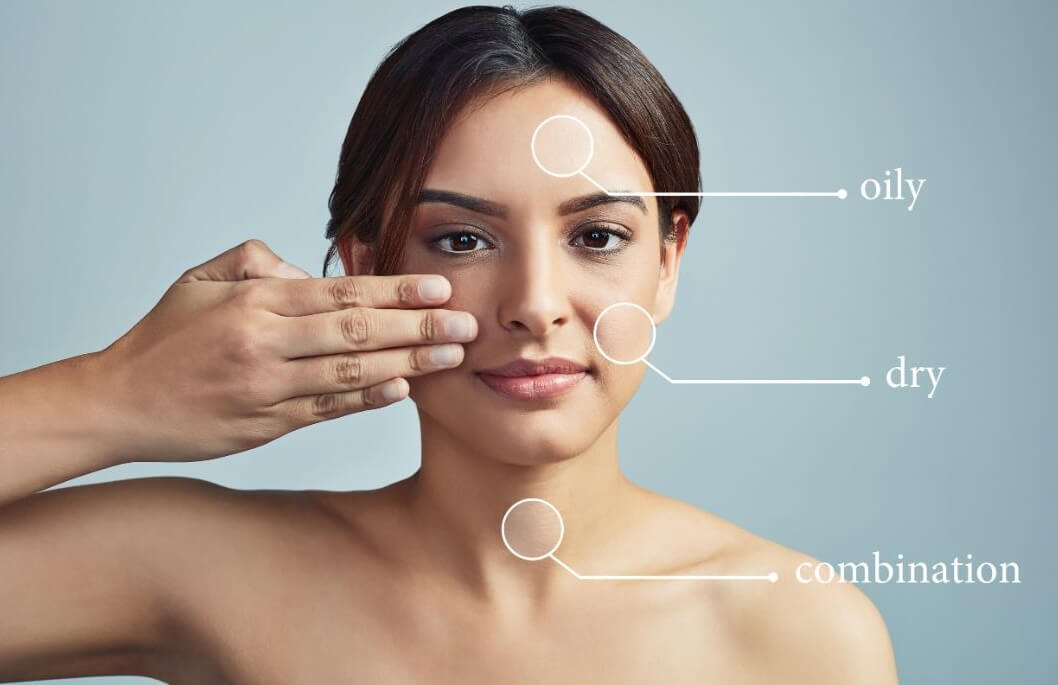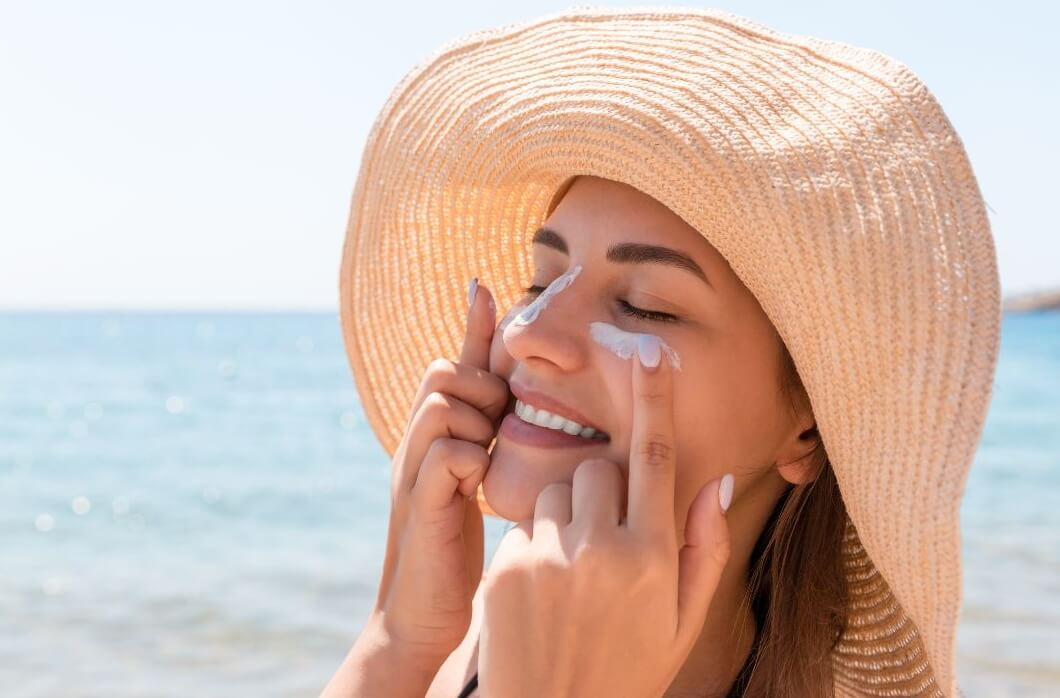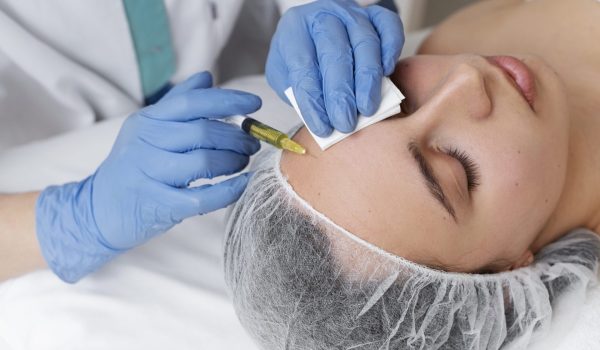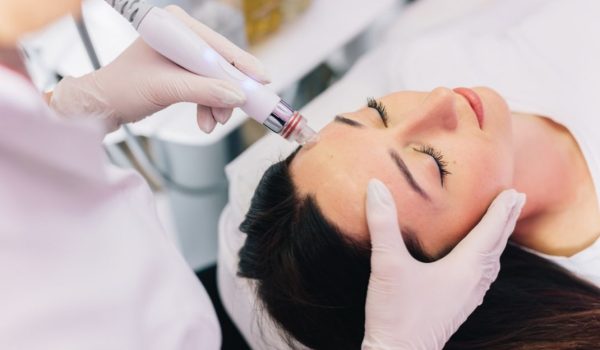How to Assist Your Client in Creating a Summer Skincare Routine
-
By: Adam Diwan
-
June 18, 2024
As temperatures rise and the sun shines brighter, it’s essential to adjust skincare routines to protect and nourish the skin.
Summer brings unique challenges that require a shift in products and practices.
Increased sun exposure, higher humidity levels, and more frequent sweating can all impact skin health, necessitating a comprehensive approach to skincare during the warmer months.
This guide will help skincare professionals, dermatologists, beauty consultants, and estheticians create a summer skincare routine for their clients, ensuring the best skin health during the season.
Assessing Your Client’s Skin Type

Understanding your client’s skin type is a major part of any summer skincare routine.
Methods for determining this include a skin type assessment, visual assessments, touch tests, and asking clients about their skin’s behaviour in different conditions.
Tools like skin analysers can provide precise data on moisture levels, sebum production, and skin texture.
Additionally, lifestyle factors such as diet, stress levels, and exposure to environmental pollutants can influence skin type and condition.
It’s essential to debunk common misconceptions, such as the idea that oily skin doesn’t need moisturiser or that dry skin can’t handle exfoliation.
Knowing whether your client has oily, dry, combination, or sensitive skin helps select the right products and treatments and means that their skin remains balanced and healthy throughout the summer.
Regular re-evaluation of skin type during different seasons and lifestyle changes can further improve the effectiveness of personalised skincare routines, providing clients with the best skin health and satisfaction.
Furthermore, educating clients on recognising changes in their skin type can empower them to make informed decisions about their skincare, adapting as necessary to maintain good skin health.
This holistic approach gives an understanding and management of individual skin needs.
Choosing the Right Products
Selecting appropriate products is required for a successful summer skincare routine.
Key products include gentle cleansers to remove sweat and pollutants without stripping the skin, and exfoliants to keep pores clear.
Lightweight serums and hydrating toners are preferable over heavy creams.
Consider recommending products from trusted sources like skincare productsfor various skin types.
Encourage clients to switch to non-comedogenic formulations to prevent clogged pores.
Additionally, products with antioxidants can help combat environmental damage caused by increased sun exposure.
Incorporating Skin Boosters

Skin boosters are concentrated treatments that address specific skin concerns, offering a potent addition to summer routines.
These can include ingredients like vitamin C, which brightens the skin and protects against UV damage, and hyaluronic acid, which provides deep hydration.
Explaining the benefits of boosters, such as improved skin texture and elasticity, can help clients see their value.
For effective boosters, consider skin boosters. Introduce boosters gradually into routines, starting with once or twice a week, to avoid overwhelming the skin.
Selecting a Suitable Moisturiser
Choosing the right moisturiser for summer involves considering the client’s skin type and the season’s demands.
Summer moisturisers should be lightweight and non-greasy, offering hydration without clogging pores.
For clients with oily or acne-prone skin, gel-based moisturisers can be beneficial. Ingredients like aloe vera and glycerin are excellent for providing hydration without heaviness.
Educate clients on the differences between winter and summer moisturisers, emphasising that products like Viscoderm Hydrobooster are ideal for maintaining hydration and skin balance during hot weather.
Importance of Sunscreen

Sunscreen is a non-negotiable part of any summer skincare routine. It protects the skin from harmful UV rays, preventing premature ageing, sunburn, and skin cancer.
There are various types of sunscreens, including physical (mineral) and chemical options, each with unique benefits.
Educate clients on proper application techniques, such as applying sunscreen 15 minutes before sun exposure and reapplying every two hours or after swimming.
Recommend sunscreens suitable for different skin types, such as those mentioned in our sun damage article.
Hydration Tips
Hydration is needed for healthy skin during summer. Encourage clients to use hydrating products like hyaluronic acid serums and moisturising mists.
Recommend products such as Jalupro Super Hydro for intensive hydration.
Additionally, remind clients to stay hydrated internally by drinking plenty of water and consuming a diet rich in fruits and vegetables.
Highlight the need to hydrate both the skin’s surface and from within to keep the skin plump and glowing.
Addressing Common Summer Skin Issues
Summer often brings specific skin issues such as sunburn, breakouts, and hyperpigmentation.
Preventative measures include regular use of sunscreen, wearing protective clothing, and avoiding peak sun hours.
For clients experiencing sunburn, recommend soothing treatments like aloe vera gel or products containing anti-inflammatory ingredients.
For breakouts, lightweight, non-comedogenic products are key.
Encourage the use of targeted treatments for hyperpigmentation, such as those containing vitamin C or niacinamide.
Always stress the need for a tailored approach to skincare, adjusting routines based on individual skin responses and needs.
Helping clients develop a summer skincare routine involves understanding their skin type, choosing appropriate products, and addressing seasonal challenges.
Encourage continual adaptation of routines and remind clients to prioritise skin health with changing seasons.
For further assistance, professionals can contact us for more resources direct from Revolve Medicare.
Related Posts
-
By: Adam Diwan
-
September 23, 2024
How to Start an Aesthetics Business
-
By: Adam Diwan
-
September 23, 2024
Top 5 Fat-Dissolving Products to Use in Your Clinic
-
By: Adam Diwan
-
July 23, 2024
Top 10 Vitamin Injections for Health and Beauty
-
By: Adam Diwan
-
July 2, 2024
How to Switch from Saxenda to Mounjaro
-
By: Adam Diwan
-
June 25, 2024
Mesotherapy vs Microneedling: A Side Effect Guide
-
By: Adam Diwan
-
June 11, 2024











